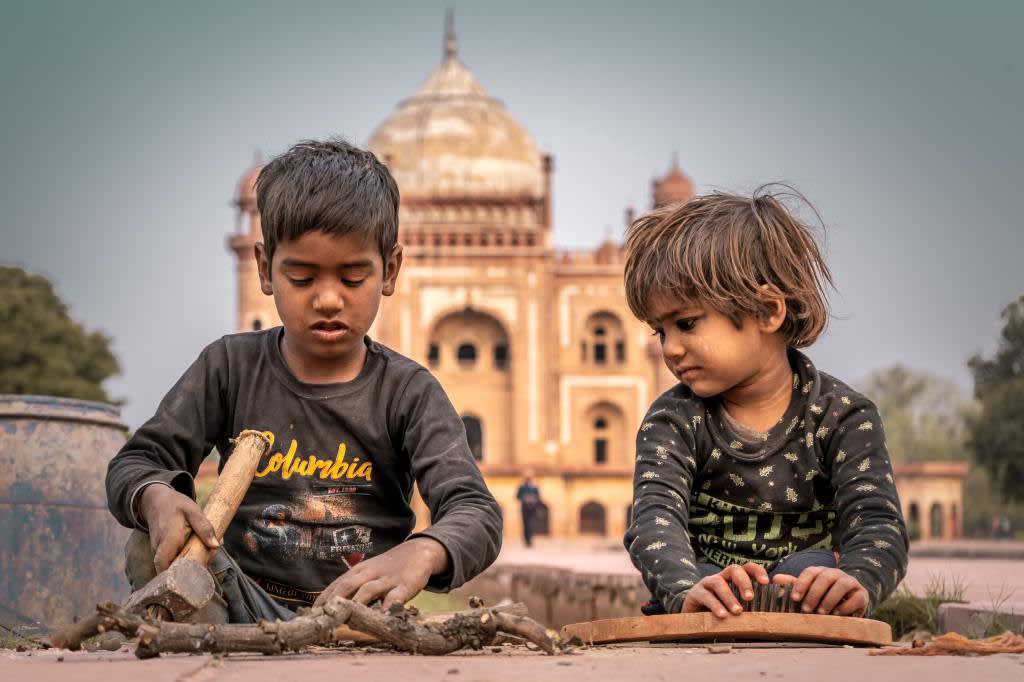Why Does The Common Person Feel So Screwed In India?
Despite soaring growth rates and shining edifices, the common person in India does not feel good, and worse, feels very screwed. Here's why this paradox haunts the Indian economy.

Why does the person on the street feel so screwed? The GDP (Gross Domestic Product), a measure of the economic growth of a nation is soaring and the equity markets continue their “dizzying” climb to more and more highs. Moreover, India is supposed to become a 5 Trillion Dollar Economy pretty soon and this euphoric feeling of taking a “place on the global high table” should be cause enough for celebrations and cheer all round. However, despite these “stellar” accomplishments, the lives of the poor and the less privileged continue to languish, with fantasy gazing at the glitzy lives of the rich and the famous substituting for the missing happiness and joy in their lives. While it is commonsense that high economic growth would invariably lead to higher incomes for all in the long run, the present situation in India resembles the Victorian Gilded Age, with the gains going to the Top 10% or worse, the Top 1%, leaving the rest in the doldrums. As the graph below shows, India is among the most unequal countries with the share of the total income showing wide divergence between the rich and the rest. Worse, the pandemic has made matters even more dire for the Indian middle class and the poor, as the bulk of the Millions of jobs lost have been from these classes.
It was not supposed to be this way. After all, the heady years of post liberalization India were like living on steroids for much of the populace who saw their incomes rise even as the fortunate few became Billionaires, thanks to the abundant “unlocking” of the trapped wealth as well as the copious flows of foreign capital. Indeed, I am a direct beneficiary of the LPG (Liberalization, Privatization, and Globalization) process, having bagged a plum IT (Information Technology) job and lived it up with gusto. Of course, it is another matter that for me, at the moment, the “other” LPG (gas cylinder) price is more concerning than the promises of the former LPG.
In the years following the economic reforms of the 1990s, the famed or infamous (depending on which side you are on) Trickle Down theory was at work, meaning that as the wealth and incomes of the Top 1% grew in stratospheric terms, the corresponding increases of these parameters for the rest too showed some gains. In other words, wealth did “trickle down” to the middle and lower classes. Indeed, some experts have calculated that the economic reforms, coupled with the broader globalization process, lifted Millions of Indians out of poverty and into the Middle Classes. This was next only to the other poster country for LPG, China, which is a different story altogether.
So, what happened in the last two decades that the common person is now left “holding the bag” , so to say, while the rich have retreated into their uber luxurious mansions, walled off from any sight that shows the plight of those who can only gawk in wonder. While some economists point to the “tapering” off of economic growth since 2010, others put their finger on how the twin “shocks” of Demonetization and GST (Goods and Services Tax) shaved off any gains made and left the rest vulnerable and at the mercy of crumbs being thrown at them. Indeed, there is some truth to the assertion that in the years following 2016, the poor have become poorer and the rich richer.
If these were not enough, the COVID Pandemic is the “last straw” for the poor as without any social safety net, the jobless and the destitute, who anyway have meager savings, are now heavily indebted, to the point that they are insolvent, by any measure. Indeed, household debt has exploded and at the same time, wages have stagnated leading to a Double Whammy, wherein subsistence incomes and soaring prices of essential goods compound indebtedness, with no real appreciation in the pay that they receive. Moreover, this “precariat” (the term used to describe those whose lives are precarious) often lack the means and the logistics to access the benefits from any of the numerous welfare schemes, making them more susceptible to exploitation by unscrupulous middlemen and “collection” agents.
With widening inequality comes another blow, that is the “hoarding” of wealth by the fortunate, or the Dream Hoarders, as the title of a book by an American author, puts it so aptly, wherein it is not allowed for the poor to dream of social mobility, leave alone making it to the top. With Youth Unemployment at an all time high, the future is indeed dire, with soaring crime rates, skyrocketing suicides, and massive social unrest, becoming the norm. Indeed, one shudders as to think of what it means to be poor in the present India, what the coming years have in store for us. Maybe this is the reason record numbers of Indians, who can afford it, are leaving the country in droves, and giving up Indian citizenship. Perhaps, this is a harbinger of what is to come.
About the Creator
Rammohan Susarla
Writer seeking metaphysical fulfillment by publishing meditations and ruminations about the world.
I am a Techie turned Business Analyst who found his true calling as a writer this journey spanning 12 years has been incredibly rewarding.





Comments
There are no comments for this story
Be the first to respond and start the conversation.